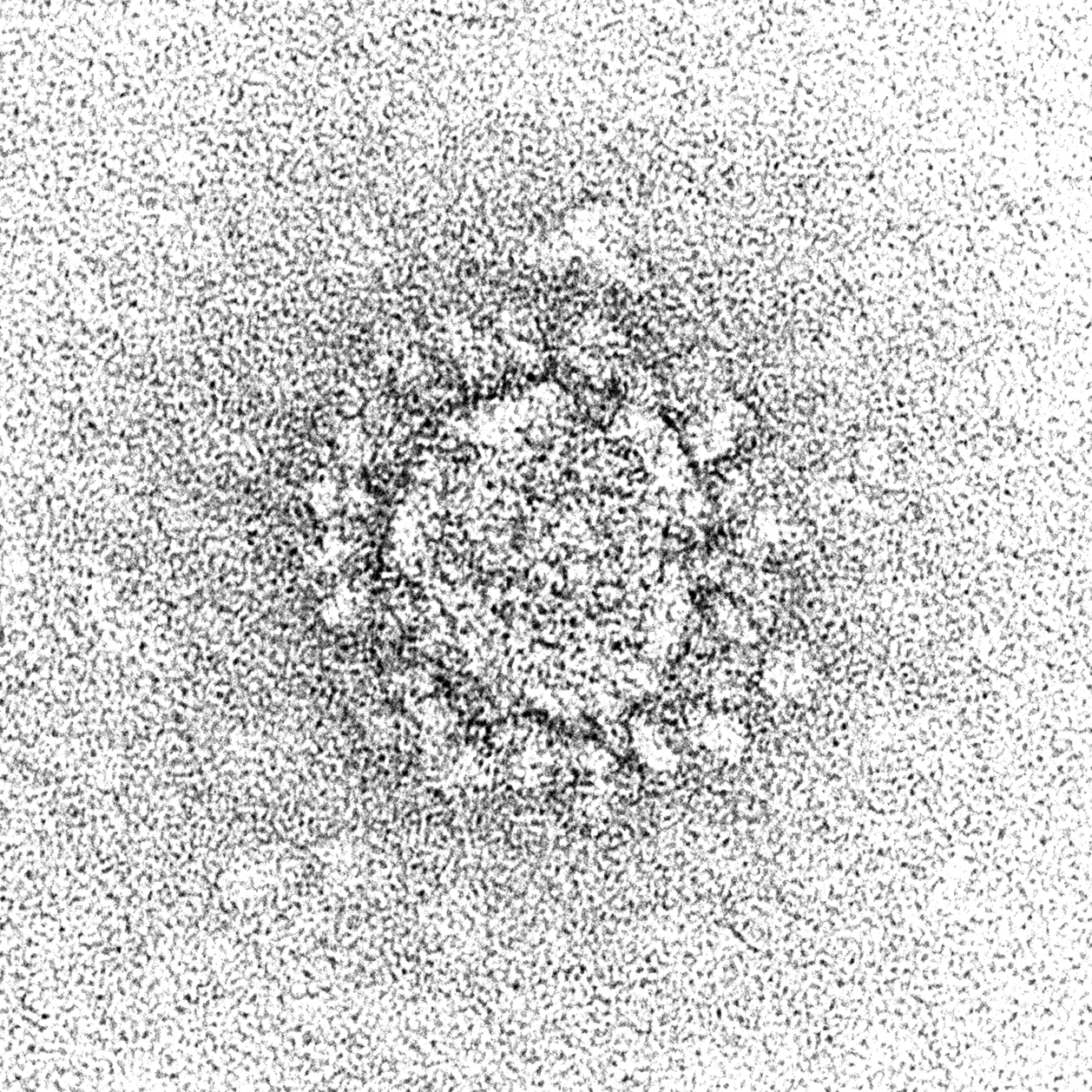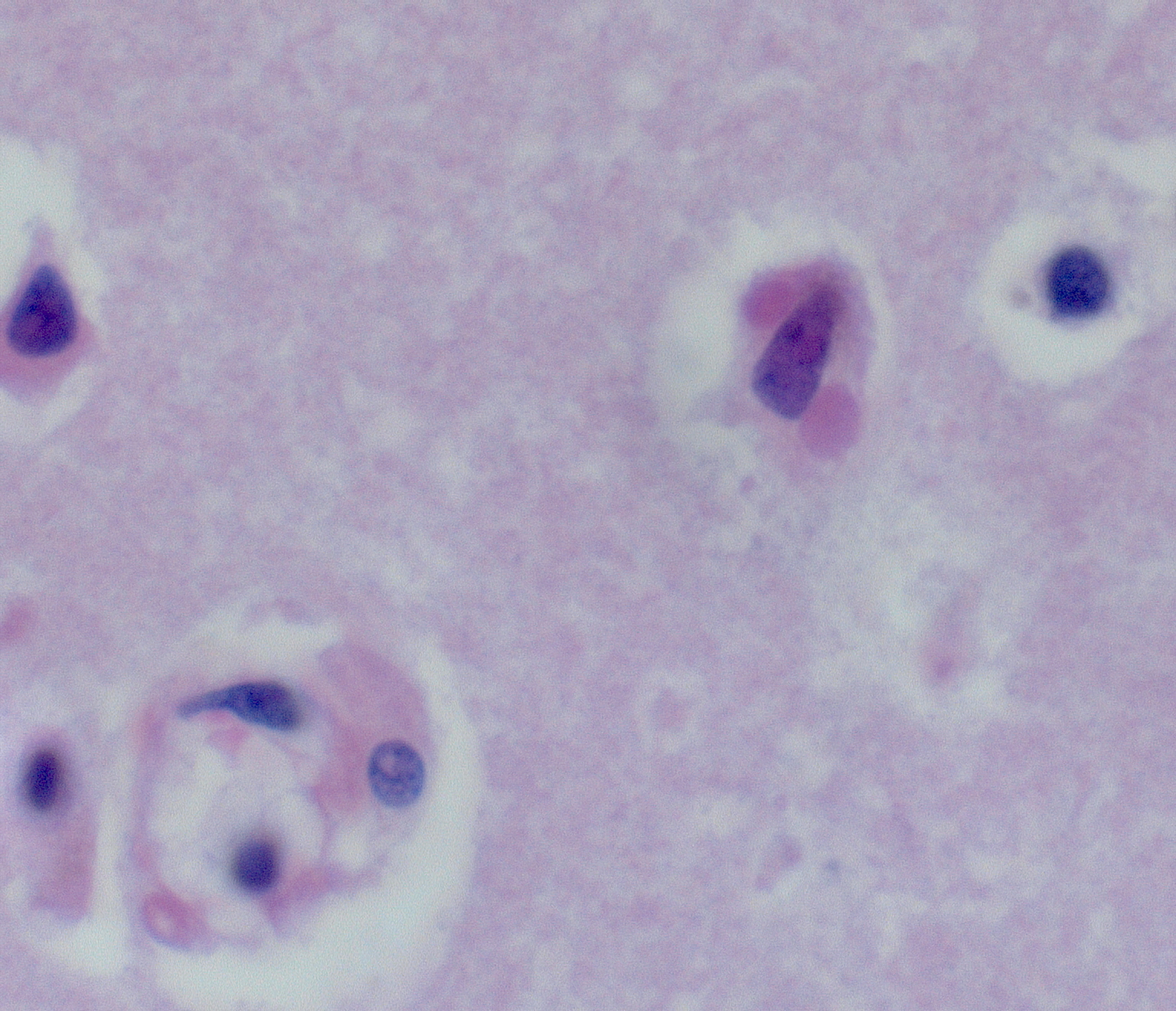What to know
CDC’s Infectious Diseases Pathology Branch (IDPB) has played a critical role in the detection, research, and surveillance of emerging, novel, and re-emerging diseases during the past 30 years. IDPB’s scientists have been at the forefront of major infectious disease discoveries over the years, including those responsible for major public health outbreaks and complex case investigations.

IDPB's work

IDPB’s scientists and staff have been at the forefront of major infectious disease discoveries during the branch’s storied history. They have identified the disease causes of many emerging infectious disease threats and have identified the organisms responsible for major public health outbreaks. Some of these include:
- Hantavirus Pulmonary Syndrome (HPS), 1993: In the early stages of the Four Corners outbreak in New Mexico, pathologic examination of autopsy tissues contributed to the overall characterization of the disease. Pathologists also developed immunohistochemistry (IHC) that was a reliable diagnostic method for the disease and helped name previously undiagnosed HPS cases. As a result, IHC became part of the national surveillance program and helped to define both the epidemiology and clinical spectrum of HPS.
- Bioterrorism-related anthrax in the United States, 2001: Before October 2021, all skin (cutaneous) anthrax cases in the U.S. were the result of agricultural or industrial exposures. In October 2001, after the bacteria responsible for anthrax (Bacillus anthracis) was isolated from a patient who worked as a news photo editor, public health authorities in the U.S. began to investigate cases of bioterrorism-related anthrax. IDPB tested autopsy and biopsy tissue of suspected cases of anthrax, and the results were vital to help diagnose anthrax in those who died from exposure and treat anthrax in survivors.
- SARS, 2003; MERS, 2012; and COVID, 2019: IDPB played a critical role in the discovery of SARS in 2003 by identifying the virus as a coronavirus using electron microscopy. Since then, IDPB has been involved in the investigation of outbreaks of similar coronaviruses, including MERS and SARS-CoV-2, the virus that causes COVID-19. IDPB tests identified SARS-CoV-2 in the first two US patients who died from the disease and described the pathology and pathogenesis of COVID-19.
- Influenza A H1N1 pandemic, 2009: Evaluating tissue samples from fatal cases using multiple techniques and tests for various pathogens showed early evidence that the H1N1 virus led to bacterial co-infection and pneumonia that was contributing to deaths. The findings played an important role in treatment recommendations for H1N1 infections and for the treatment and prevention of bacterial coinfections.
- Dengue, 2010: IDPB worked closely with CDC's Dengue Branch and Puerto Rican public health authorities to diagnose and monitor for fatal dengue infections. They also discovered an increased number of leptospirosis infections during the same time period and were able to assist with addressing that outbreak.
- Fungal meningitis, 2012: IDPB was one of the first labs to identify fungal infections associated with a US multistate outbreak of neurologic disease associated with contaminated injectable medications. IDPB's evaluation of biopsy and autopsy specimens and collaboration with CDC's Mycotic Diseases Branch led to rapid identification of the fungi involved. These findings helped guide treatment for infected patients, reducing the number of deaths.
- Zika virus, 2015: IDPB's evaluation and testing of pathology tissue specimens from infants with microcephaly provided the first evidence showing that Zika virus was present and replicating within the brain and was the cause of disease. They also showed that Zika virus can infect the placenta during pregnancy and be transmitted to babies before birth.
- Tattoo-associated nontuberculous mycobacteria skin infections, 2015; Mycobacterium marinum group skin infections associated with fish markets, 2016: IDPB played an important role in identification of nontuberculous Mycobacterium species infections using multiple tissue-based assays. Collaboration with external public health partners helped contain the infections.
- E-cigarette, or vaping, product use-associated lung injury (EVALI), 2019: IDPB played an important role by describing the spectrum of lung injury patterns that affect patients with severe and fatal EVALI.
- Monkeypox, 2003, 2022: The first US outbreak of monkeypox virus was traced to the importation of infected African rodents. IDPB testing helped show the virus in both human and animal tissues. In the global outbreak of monkeypox that began in 2022, IDPB was able to quickly identify Monkeypox virus as the cause of severe and fatal infections in certain immunocompromised populations. Their work helped to understand how the virus caused fatal disease.
- Pediatric hepatitis, 2021: After clusters of pediatric acute hepatitis (liver disease) of unknown cause were reported globally, IDPB's work helped identify multiple pathogens involved in the illnesses and provided insights into the pathology and pathogenesis of disease.
- Latrogenic Fusarium fungal meningitis, 2023: IDPB's evaluation of autopsy specimens from patients with nosocomial Fusarium solani meningitis was key to understand how the fungus causes devastating injury to the brain and its vasculature. IDPB's work helped guide treatment for infected patients.
- Transplant-associated investigations: Over the years, IDPB has been involved in diagnosing various infections in people who have received transplants. These include clusters where multiple people became ill after receiving organ transplants from a common donor. Some examples include rabies virus, West Nile virus, yellow fever virus, and amoeba and fungal infections. Working with CDC collaborators and public health partners, IDPB's helped bring attention to the importance of screening donated organs for infections.

Resources
Selected Publications
Strong N, Meeks G, Sheth SA, McCullough L, Villalba JA, et al. Neurovascular Complications of Iatrogenic Fusarium solani Meningitis. N Engl J Med. 2024 Feb 8;390(6):522-529. doi: 10.1056/NEJMoa2308192. PMID: 38324485.
Ritter JM, Martines RB, Bhatnagar J, Rao AK, Villalba JA, et al. Pathology and Monkeypox virus Localization in Tissues From Immunocompromised Patients With Severe or Fatal Mpox. J Infect Dis. 2024 Mar 26;229(Supplement_2):S219-S228. doi: 10.1093/infdis/jiad574. PMID: 38243606.
Gould CV, Free RJ, Bhatnagar J, Soto RA, et al. Transmission of yellow fever vaccine virus through blood transfusion and organ transplantation in the USA in 2021: report of an investigation. Lancet Microbe. 2023 Sep;4(9):e711-e721. doi: 10.1016/S2666-5247(23)00170-2.
Bhatnagar J, Gary J, Reagan-Steiner S, Estetter LB, et al. Evidence of Severe Acute Respiratory Syndrome Coronavirus 2 Replication and Tropism in the Lungs, Airways, and Vascular Endothelium of Patients with Fatal Coronavirus Disease 2019: An Autopsy Case Series. J Infect Dis. 2021 Mar 3;223(5):752-764. doi: 10.1093/infdis/jiab039. PMID: 33502471; PMCID: PMC7928839.
Martines RB, Ritter JM, Matkovic E, Gary J, et al. Pathology and Pathogenesis of SARS-CoV-2 Associated with Fatal Coronavirus Disease, United States. Emerg Infect Dis. 2020 Sep;26(9):2005-2015. doi: 10.3201/eid2609.202095. Epub 2020 May 21. PMID: 32437316; PMCID: PMC7454055.
Ritter JM, Wilson TM, Gary JM, Seixas JN,et al. . Histopathology and localization of SARS-CoV-2 and its host cell entry receptor ACE2 in tissues from naturally infected US-farmed mink (Neovison vison). Vet Pathol. 2022 Jul;59(4):681-695. doi: 10.1177/03009858221079665. Epub 2022 Mar 1. PMID: 35229669.
Reagan-Steiner S, Gary J, Matkovic E, Ritter JM,et al. . Pathological findings in suspected cases of e-cigarette, or vaping, product use-associated lung injury (EVALI): a case series. Lancet Respir Med. 2020 Dec;8(12):1219-1232. doi: 10.1016/S2213-2600(20)30321-0. Epub 2020 Aug 4. PMID: 32763198; PMCID: PMC9477212
Bhatnagar J, Rabeneck DB, Martines RB, Reagan-Steiner S,et al. . Zika Virus RNA Replication and Persistence in Brain and Placental Tissue. Emerg Infect Dis. 2017 Mar;23(3):405-414. doi: 10.3201/eid2303.161499. Epub 2017 Mar 15. PMID: 27959260; PMCID: PMC5382738.
Martines RB, Bhatnagar J, de Oliveira Ramos AM, Davi HP, et al. Pathology of congenital Zika syndrome in Brazil: a case series. Lancet. 2016 Aug 27;388(10047):898-904. doi: 10.1016/S0140-6736(16)30883-2. Epub 2016 Jun 29. PMID: 27372395.
Ng DL, Al Hosani F, Keating MK, Gerber SI, et al. Clinicopathologic, Immunohistochemical, and Ultrastructural Findings of a Fatal Case of Middle East Respiratory Syndrome Coronavirus Infection in the United Arab Emirates, April 2014. Am J Pathol. 2016 Mar;186(3):652-8. doi: 10.1016/j.ajpath.2015.10.024. Epub 2016 Feb 5. PMID: 26857507; PMCID: PMC7093852.
Muehlenbachs A, Bhatnagar J, Agudelo CA, Hidron A, et al. Malignant Transformation of Hymenolepis nana in a Human Host. N Engl J Med. 2015 Nov 5;373(19):1845-52. doi: 10.1056/NEJMoa1505892. PMID: 26535513.
Sia TY, Taimur S, Blau DM,et al. Clinical and Pathological Evaluation of Mycobacterium marinum Group Skin Infections Associated With Fish Markets in New York City. Clin Infect Dis. 2016 Mar 1;62(5):590-5. doi: 10.1093/cid/civ937. Epub 2015 Dec 16. PMID: 26673347.
Ritter JM, Muehlenbachs A, Blau DM, Paddock CD, et al. Exserohilum infections associated with contaminated steroid injections: a clinicopathologic review of 40 cases. Am J Pathol. 2013 Sep;183(3):881-92. doi: 10.1016/j.ajpath.2013.05.007. Epub 2013 Jun 26. PMID: 23809916; PMCID: PMC4401815.
Bhatnagar J, Jones T, Blau DM, Shieh WJ, Paddock CD, Drew C, Denison AM, Rollin DC, Patel M, Zaki SR. Localization of pandemic 2009 H1N1 influenza A virus RNA in lung and lymph nodes of fatal influenza cases by in situ hybridization: new insights on virus replication and pathogenesis. J Clin Virol. 2013 Mar;56(3):232-7. doi: 10.1016/j.jcv.2012.11.014. Epub 2012 Dec 14. PMID: 23246358.
Shieh WJ, Blau DM, Denison AM, et al. 2009 pandemic influenza A (H1N1): pathology and pathogenesis of 100 fatal cases in the United States. Am J Pathol. 2010 Jul;177(1):166-75. doi: 10.2353/ajpath.2010.100115. Epub 2010 May 27. PMID: 20508031; PMCID: PMC2893660.
Bhatnagar J, Guarner J, Paddock CD, Shieh WJ, Lanciotti RS, Marfin AA, Campbell GL, Zaki SR. Detection of West Nile virus in formalin-fixed, paraffin-embedded human tissues by RT-PCR: a useful adjunct to conventional tissue-based diagnostic methods. J Clin Virol. 2007 Feb;38(2):106-11. doi: 10.1016/j.jcv.2006.11.003. Epub 2006 Dec 8. PMID: 17161650.
Srinivasan A, Burton EC, Kuehnert MJ, Rupprecht C, Sutker WL, Ksiazek TG, Paddock CD, Guarner J, Shieh WJ, Goldsmith C, et al. Rabies in Transplant Recipients Investigation Team. Transmission of rabies virus from an organ donor to four transplant recipients. N Engl J Med. 2005 Mar 17;352(11):1103-11. doi: 10.1056/NEJMoa043018. PMID: 15784663.
Fischer M, Bhatnagar J, Guarner J, Reagan S, et al. Fatal toxic shock syndrome associated with Clostridium sordellii after medical abortion. N Engl J Med. 2005 Dec 1;353(22):2352-60. doi: 10.1056/NEJMoa051620. PMID: 16319384.
Guarner J, Johnson BJ, Paddock CD, Shieh WJ, Goldsmith CS, et al. Monkeypox transmission and pathogenesis in prairie dogs. Emerg Infect Dis. 2004 Mar;10(3):426-31. doi: 10.3201/eid1003.030878. PMID: 15109408; PMCID: PMC3322777.
Goldsmith CS, Tatti KM, Ksiazek TG, Rollin PE, et al. Ultrastructural characterization of SARS coronavirus. Emerg Infect Dis. 2004 Feb;10(2):320-6. doi: 10.3201/eid1002.030913. PMID: 15030705; PMCID: PMC3322934.
Shieh WJ, Guarner J, Paddock C, Greer P, et al. The critical role of pathology in the investigation of bioterrorism-related cutaneous anthrax. Am J Pathol. 2003 Nov;163(5):1901-10. doi: 10.1016/S0002-9440(10)63548-1. PMID: 14578189; PMCID: PMC1892419.
Iwamoto M, Jernigan DB, Guasch A, Trepka MJ, Blackmore CG, Hellinger WC, Pham SM, Zaki S, et al. Transmission of West Nile virus from an organ donor to four transplant recipients. N Engl J Med. 2003 May 29;348(22):2196-203. doi: 10.1056/NEJMoa022987. PMID: 12773646.
Zaki SR, Greer PW, Coffield LM, Goldsmith CS, Nolte KB, Foucar K, Feddersen RM, Zumwalt RE, Miller GL, Khan AS, et al. Hantavirus pulmonary syndrome. Pathogenesis of an emerging infectious disease. Am J Pathol. 1995 Mar;146(3):552-79. PMID: 7887439; PMCID: PMC1869168.
